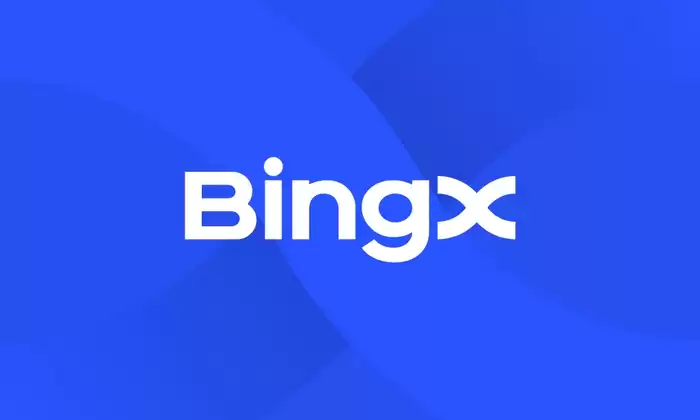-
 Bitcoin
Bitcoin $117800
0.49% -
 Ethereum
Ethereum $4432
0.55% -
 XRP
XRP $3.106
1.07% -
 Tether USDt
Tether USDt $1.001
0.01% -
 BNB
BNB $835.8
1.74% -
 Solana
Solana $189.1
2.72% -
 USDC
USDC $0.9999
-0.01% -
 Dogecoin
Dogecoin $0.2302
3.65% -
 TRON
TRON $0.3485
-0.69% -
 Cardano
Cardano $0.9212
-0.91% -
 Hyperliquid
Hyperliquid $46.97
1.45% -
 Chainlink
Chainlink $22.77
5.61% -
 Stellar
Stellar $0.4284
0.82% -
 Sui
Sui $3.766
2.82% -
 Bitcoin Cash
Bitcoin Cash $583.5
-0.82% -
 Ethena USDe
Ethena USDe $1.001
0.03% -
 Hedera
Hedera $0.2512
2.78% -
 Avalanche
Avalanche $24.18
2.27% -
 Litecoin
Litecoin $120.2
2.10% -
 Toncoin
Toncoin $3.450
1.96% -
 UNUS SED LEO
UNUS SED LEO $9.412
-0.92% -
 Shiba Inu
Shiba Inu $0.00001298
2.35% -
 Uniswap
Uniswap $10.99
3.75% -
 Polkadot
Polkadot $3.962
3.09% -
 Dai
Dai $1.000
0.00% -
 Bitget Token
Bitget Token $4.643
1.38% -
 Cronos
Cronos $0.1511
-0.08% -
 Ethena
Ethena $0.7246
3.18% -
 Monero
Monero $254.9
7.90% -
 Pepe
Pepe $0.00001100
3.32%
How does BingX perpetual contract work?
Perpetual contracts offer a way for traders to speculate on crypto prices without owning the assets themselves, providing the potential for high leverage but also conllevate significant risks.
Nov 23, 2024 at 11:27 pm

Step 1: Understanding Perpetual Contracts
Perpetual contracts are a type of financial derivative that allows traders to speculate on the future price of an underlying asset, such as Bitcoin or Ethereum, without owning the asset itself. They are similar to futures contracts, but they do not have an expiration date, allowing traders to hold their positions indefinitely.
BingX offers perpetual contracts on various cryptocurrencies, including BTC, ETH, XRP, and many others. These contracts offer up to 100x leverage, allowing traders to amplify their profits or losses. However, it's crucial to note that leverage is a double-edged sword, and traders must exercise caution when using it.
Step 2: Funding Rates and Mark Price
One unique aspect of perpetual contracts is the concept of funding rates and mark price. The funding rate is a periodic payment that is paid or received by traders depending on the difference between the perpetual contract price and the spot price of the underlying asset. The mark price is a reference price that is used to calculate the funding rate and to determine whether traders are in profit or loss.
If the perpetual contract price is trading above the spot price, traders with long positions (betting on the price going up) will pay funding to traders with short positions (betting on the price going down). This mechanism ensures that the perpetual contract price remains closely aligned with the spot price.
Step 3: Trading Interface and Order Types
The BingX trading interface for perpetual contracts is user-friendly and offers a range of order types for traders to choose from. Market orders execute immediately at the best available price, while limit orders allow traders to specify the desired price at which they want to buy or sell.
Stop orders, such as stop-loss orders and take-profit orders, can be used to manage risk and protect profits. Stop-loss orders automatically sell a position if the price falls below a predetermined level, while take-profit orders automatically sell a position if the price rises above a predetermined level.
Step 4: Risk Management and Liquidations
Perpetual contracts come with inherent risks due to the use of leverage. Traders must employ sound risk management strategies to minimize their losses. These strategies include:
- Setting stop-loss orders to limit losses
- Monitoring margin levels and adding funds when necessary
- Using position sizing techniques to avoid overexposure
- Understanding the concept of liquidation and taking steps to avoid it
Liquidation occurs when a trader's margin falls below a certain level. In such cases, the exchange will automatically close out the trader's position at the current market price, potentially resulting in significant losses.
Step 5: Fees and Margin Calculations
BingX charges a competitive fee structure for perpetual contracts. Fees include trading fees, funding fees, and withdrawal fees. Traders should familiarize themselves with these fees before entering into trades.
Margin is the amount of collateral that traders need to hold in their account to maintain their perpetual contract positions. Margin requirements vary depending on the contract and the amount of leverage used. Traders can calculate their margin requirements using the following formula:
Margin required = Position size / (Entry price * Leverage)
Disclaimer:info@kdj.com
The information provided is not trading advice. kdj.com does not assume any responsibility for any investments made based on the information provided in this article. Cryptocurrencies are highly volatile and it is highly recommended that you invest with caution after thorough research!
If you believe that the content used on this website infringes your copyright, please contact us immediately (info@kdj.com) and we will delete it promptly.
- Kazakhstan's Crypto Leap: Bitcoin ETF and Central Asia's Digital Finance Future
- 2025-08-13 12:45:19
- BlockDAG Presale Blazes Past $371M: Fundraising Frenzy Fuels Crypto Sensation
- 2025-08-13 13:05:21
- Meme Coins: Chasing the 2025 Surge – Which Will Moonshot?
- 2025-08-13 10:25:23
- Bitcoin's Wild Ride: Rally, Pullback, and What's Next
- 2025-08-13 10:25:23
- Bitcoin, Bitmax, and Institutional Demand: A New Era of Crypto Investment
- 2025-08-13 10:45:12
- Solana, ROAM, and Airdrops: What's the Buzz in 2025?
- 2025-08-13 11:35:13
Related knowledge

Is it possible to adjust the leverage on an open position on KuCoin?
Aug 09,2025 at 08:21pm
Understanding Leverage in KuCoin Futures TradingLeverage in KuCoin Futures allows traders to amplify their exposure to price movements by borrowing fu...

What cryptocurrencies are supported as collateral on KuCoin Futures?
Aug 11,2025 at 04:21am
Overview of KuCoin Futures and Collateral MechanismKuCoin Futures is a derivatives trading platform that allows users to trade perpetual and delivery ...

What is the difference between realized and unrealized PNL on KuCoin?
Aug 09,2025 at 01:49am
Understanding Realized and Unrealized PNL on KuCoinWhen trading on KuCoin, especially in futures and perpetual contracts, understanding the distinctio...

What different order types are available to use on KuCoin Futures?
Aug 13,2025 at 11:35am
Understanding Order Types on KuCoin FuturesKuCoin Futures offers a comprehensive range of order types to accommodate different trading strategies and ...

How does KuCoin Futures compare against Binance Futures in terms of features?
Aug 09,2025 at 03:22am
Trading Interface and User ExperienceThe trading interface is a critical component when comparing KuCoin Futures and Binance Futures, as it directly i...

How can I manage risk when applying high leverage on KuCoin?
Aug 13,2025 at 11:35am
Understanding High Leverage and Its Implications on KuCoinHigh leverage in cryptocurrency trading allows users to control larger positions with a rela...

Is it possible to adjust the leverage on an open position on KuCoin?
Aug 09,2025 at 08:21pm
Understanding Leverage in KuCoin Futures TradingLeverage in KuCoin Futures allows traders to amplify their exposure to price movements by borrowing fu...

What cryptocurrencies are supported as collateral on KuCoin Futures?
Aug 11,2025 at 04:21am
Overview of KuCoin Futures and Collateral MechanismKuCoin Futures is a derivatives trading platform that allows users to trade perpetual and delivery ...

What is the difference between realized and unrealized PNL on KuCoin?
Aug 09,2025 at 01:49am
Understanding Realized and Unrealized PNL on KuCoinWhen trading on KuCoin, especially in futures and perpetual contracts, understanding the distinctio...

What different order types are available to use on KuCoin Futures?
Aug 13,2025 at 11:35am
Understanding Order Types on KuCoin FuturesKuCoin Futures offers a comprehensive range of order types to accommodate different trading strategies and ...

How does KuCoin Futures compare against Binance Futures in terms of features?
Aug 09,2025 at 03:22am
Trading Interface and User ExperienceThe trading interface is a critical component when comparing KuCoin Futures and Binance Futures, as it directly i...

How can I manage risk when applying high leverage on KuCoin?
Aug 13,2025 at 11:35am
Understanding High Leverage and Its Implications on KuCoinHigh leverage in cryptocurrency trading allows users to control larger positions with a rela...
See all articles

























































































